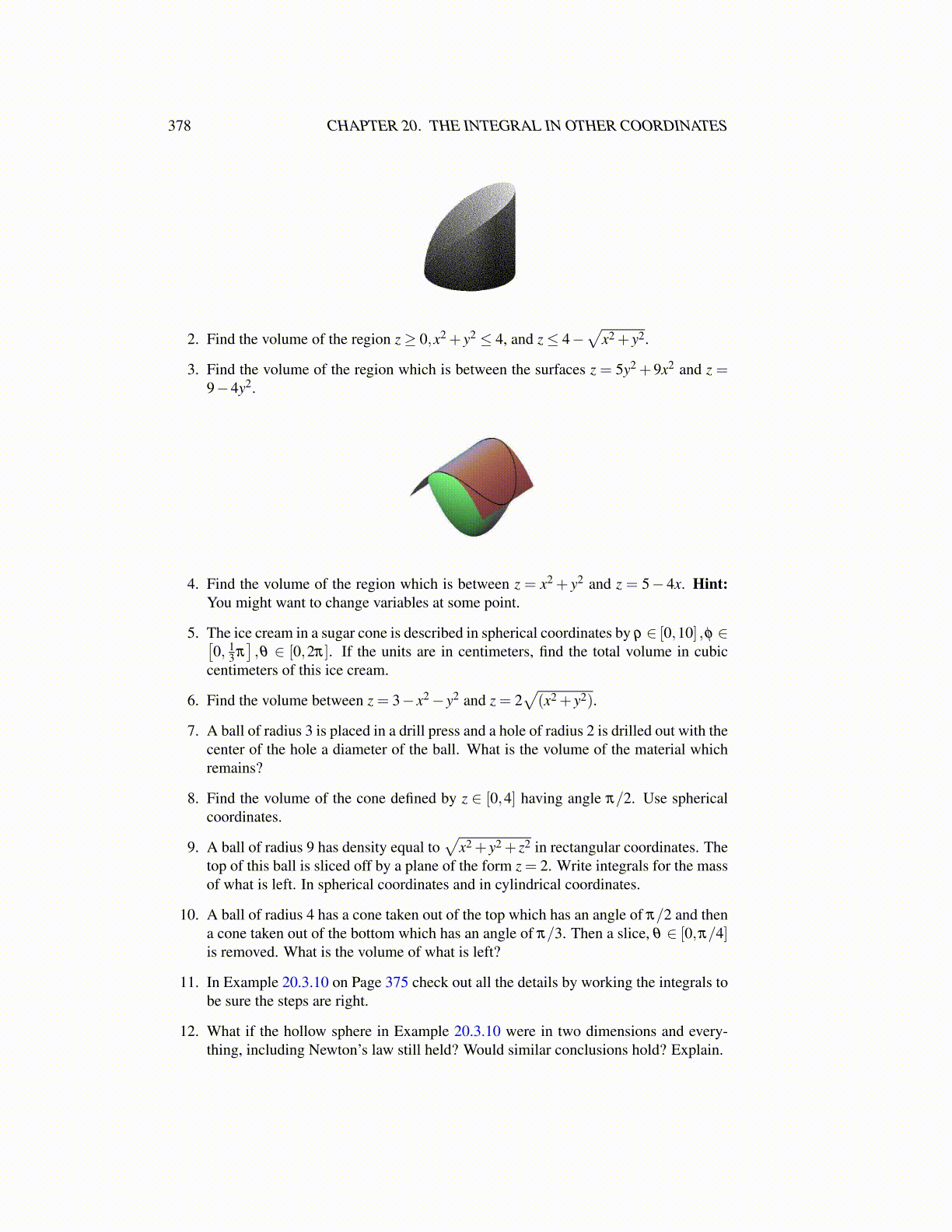
378 CHAPTER 20. THE INTEGRAL IN OTHER COORDINATES
2. Find the volume of the region z≥ 0,x2 + y2 ≤ 4, and z≤ 4−√
x2 + y2.
3. Find the volume of the region which is between the surfaces z = 5y2 + 9x2 and z =9−4y2.
4. Find the volume of the region which is between z = x2 + y2 and z = 5− 4x. Hint:You might want to change variables at some point.
5. The ice cream in a sugar cone is described in spherical coordinates by ρ ∈ [0,10] ,φ ∈[0, 1
3 π],θ ∈ [0,2π]. If the units are in centimeters, find the total volume in cubic
centimeters of this ice cream.
6. Find the volume between z = 3− x2− y2 and z = 2√(x2 + y2).
7. A ball of radius 3 is placed in a drill press and a hole of radius 2 is drilled out with thecenter of the hole a diameter of the ball. What is the volume of the material whichremains?
8. Find the volume of the cone defined by z ∈ [0,4] having angle π/2. Use sphericalcoordinates.
9. A ball of radius 9 has density equal to√
x2 + y2 + z2 in rectangular coordinates. Thetop of this ball is sliced off by a plane of the form z = 2. Write integrals for the massof what is left. In spherical coordinates and in cylindrical coordinates.
10. A ball of radius 4 has a cone taken out of the top which has an angle of π/2 and thena cone taken out of the bottom which has an angle of π/3. Then a slice, θ ∈ [0,π/4]is removed. What is the volume of what is left?
11. In Example 20.3.10 on Page 375 check out all the details by working the integrals tobe sure the steps are right.
12. What if the hollow sphere in Example 20.3.10 were in two dimensions and every-thing, including Newton’s law still held? Would similar conclusions hold? Explain.